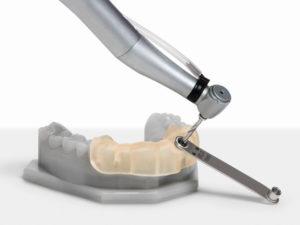 In the increasingly expansive 3D printing industry, new printers and materials seem to be flooding the market on a daily basis. While the creation of new and enhanced materials are critical to the advancement of the industry, it’s just as important that we know how the best utilize the materials we already have at our disposal. That’s why a number of 3D printing companies and researchers have gone out of their way to publish guides that detail the characteristics and benefits of each material type.
In the increasingly expansive 3D printing industry, new printers and materials seem to be flooding the market on a daily basis. While the creation of new and enhanced materials are critical to the advancement of the industry, it’s just as important that we know how the best utilize the materials we already have at our disposal. That’s why a number of 3D printing companies and researchers have gone out of their way to publish guides that detail the characteristics and benefits of each material type.
The latest comprehensive material companion comes from the 3D printing marketplace and community Pinshape. The Pinshape 3D Printer Materials Guide focuses on materials for both FDM and SLA 3D printing, starting off with a quick breakdown of the fundamental differences between filament and resin materials. What separates their guide from most is that they categorize each material into one of four categories, all of which are centered around different levels of function and purpose:
- General Purpose – For designers looking to print models or hobbyists with novice 3D printing experience.
- Functional – For creating functional prototypes and end products.
- Aesthetic – For tinkering with effects, aiming for aesthetic quality over functionality.
- Application Specific– Specialty materials for dentists, jewelry makers, engineers, and artists.
In the General Purpose section, Pinshape starts with none other than PLA, the most accessible and popularly used material on the FDM 3D printing market. Although the guide acknowledges the brittleness of this biodegradable material, its non-toxic fumes and strong layer bonding make it ideal for general use. Following PLA, Pinshape lists HIPS (High Impact Polystyrene) for its compatibility as a support material, as well as the flexible and sturdy PET (Polyethylene terephthalate). The “General Purpose” section also includes Standard Resin as the sole SLA material in that category, listed for providing a great surface finish and fine details.
The Functional section includes a wide range of materials, offering a handful of options for both FDM and SLA printing. On the FDM side, Pinshape lists Carbon Fiber PLA, Nylon, and flexible filaments like TPE and TPU. For SLA technology, the guide suggests using Formlabs’ Flexible resin, High Temperature resin, and Durable resin depending on the required functionality. This group of materials are what someone attempting to print functional prototypes or use-end products should be looking at.
For those looking to prioritize a unique look over functionality and purpose, Pinshape’s Aesthetic category offers three types of FDM 3D printing materials. These increasingly popular specialized filaments include wood filament, metal filled PLA, and thermo temperature changing PLA. Wood filaments like woodFill and Laywood are PLA-based filaments that are infused with wood fiber and polymer binder, giving the material a natural wood effect. Metal filled filament, which includes popular composites such as bronze, copper, steel, and iron, provides a metallic effect that usually requires post-processing. Lastly, thermo temperature changing filaments are PLA-based materials that can change colors depending on the temperature or light exposure.
Finally, the Application Specific section is conquered by three SLA materials, including Castable resin, Ceramic resin, and Biocompatible resin. The highly detailed Castable resin is ideal for jewelry, miniatures, or small mechanical components. Ceramic resin is popular among artists due to its ability to be fired and glazed after printing. Biocompatible resin is widely used for dental and medical applications, particularly for producing patient-specific surgical guides. The guide also acknowledged Conductive PLA as an “Application Specific” material, primarily due to its effectiveness with LED objects and various Arduino projects.
All in all, Pinshape’s brief, yet all-encompassing 3D Printer Material Guide is a great place for both novice and advanced users on the hunt for the ideal material. By breaking down the differences between printers and materials, this companion offers an unbiased and broad view at the vast array of 3D printing materials available on the market. While many similar guides are densely focused on specific mechanical characteristics and different properties, Pinshape’s guide simply looks to help you get your foot in the door, leaving your imagination and adventurous spirit to do the rest. Discuss in the Pinshape forum at 3DPB.com.
Subscribe to Our Email Newsletter
Stay up-to-date on all the latest news from the 3D printing industry and receive information and offers from third party vendors.
You May Also Like
3D Printing News Briefs, April 13, 2024: Robotics, Orthotics, & Hypersonics
In 3D Printing News Briefs today, we’re focusing first on robotics, as Carnegie Mellon University’s new Robotics Innovation Center will house several community outreach programs, and Ugogo3D is now working...
Rail Giant Alstom Saves $15M with 3D Printing Automation Software 3D Spark
3D Spark has entered into a three-year deal with the rail giant Alstom. Alstom, a transport behemoth with annual revenues of $16 billion, specializes in the manufacture of trains, trams,...
Meltio Expands Global Reach with New Partnerships in the Americas and Europe
Spanish 3D printing manufacturer Meltio has expanded its sales network across the globe. With the addition of three new partners in the United States, Brazil, Argentina, and Italy, Meltio aims...
3D Printing Webinar and Event Roundup: April 7, 2024
Webinars and events in the 3D printing industry are picking back up this week! Sea-Air-Space is coming to Maryland, and SAE International is sponsoring a 3D Systems webinar about 3D...



































